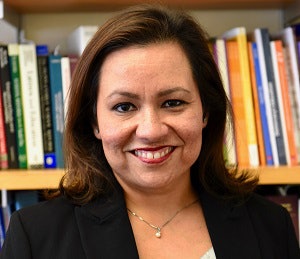The National Student Clearinghouse Research Center’s report on retention and persistence rates for the fall 2019 freshman cohort shows a marked decrease in return enrollment and is a direct reflection of the pandemic-related struggles experienced by first-year higher education students during the onset of COVID-19.
Latinx students, part-time students, and community colleges were hardest hit.
Assessments were defined along two parameters: persistence and retention. Persistence measures those students who returned to any U.S. college or university for their second year. Retention is the measure of students who returned to the same institution where they began their studies. Overall persistence shrank by two percentage points to 73.9%, its lowest rate since 2012.
 Dr. Mikyung Ryu
Dr. Mikyung RyuTwo percentage points might not seem like a lot, but Dr. Mikyung Ryu, director of research publications at the National Student Clearinghouse said, “it’s a big deal.”
“There are about 2.5 million first-time freshman students enrolled in higher education institutions across the U.S.,” said Ryu. “Losing 2% of students in persistence means losing roughly 70,000 students in their second year of education.”
Students at four-year public institutions were more likely than in years past to stay enrolled at the institution they started with, a .7% increase in retention. This is possibly a “response to the greater immobility of pandemic life,” said Ryu.
Since 2011, an average of 9.2% of first-year students transfer to a different school. During COVID, that number was closer to 7%.
Two-year public institutions and community colleges saw both their persistence and retention numbers drop. Full-time student persistence dropped by 3%; part-time student persistence dropped by 5%. Part-time students saw worsening levels of retention and persistence at every higher education institution except private for-profit four-year schools.
The largest persistence decrease (3.2%) occurred within Latinx populations. Latinx students, who had previously experienced great stability in persistence, saw the numbers drop across all types of institutions, whether four-year or two-year, public or private.
Knowing this information can help colleges and universities “acknowledge where the disruption is more severe,” said Dr. Stella Flores, an associate professor of higher education at New York University. “We’re in recovery. Recovery means coming to terms with where the inequality was and how it’s grown. Those with less resources get hit the most.”
The pandemic exacerbated all the “family obligations or work obligations that will not allow [part-time students] to engage in full time study,” said Ryu. The choice of education became “a lot more challenging to pursue and maintain during the pandemic,” said Ryu.
It’s not just the economic or health impacts of COVID-19 that influenced retention and persistence. Flores said that the overall college experience may have played a factor as well.
 Dr. Stella Flores
Dr. Stella FloresAccording to “anecdotal stories that I’ve heard from low-income students,” said Flores, a pandemic education just “wasn’t the school life that students were expecting. Students became disengaged quickly and didn’t see the point.”
Ryu said that the National Student Clearinghouse expects to see another drop in retention and persistence when they get the numbers for fall 2020 next year, perhaps the greatest drop yet.
National Student Clearinghouse data represents 97% of all U.S., Title IV, degree-granting institutions. The National Student Clearinghouse has been tracking rate of undergraduate retention and persistence since 2015.
Liann Herder can be reached at [email protected].



















